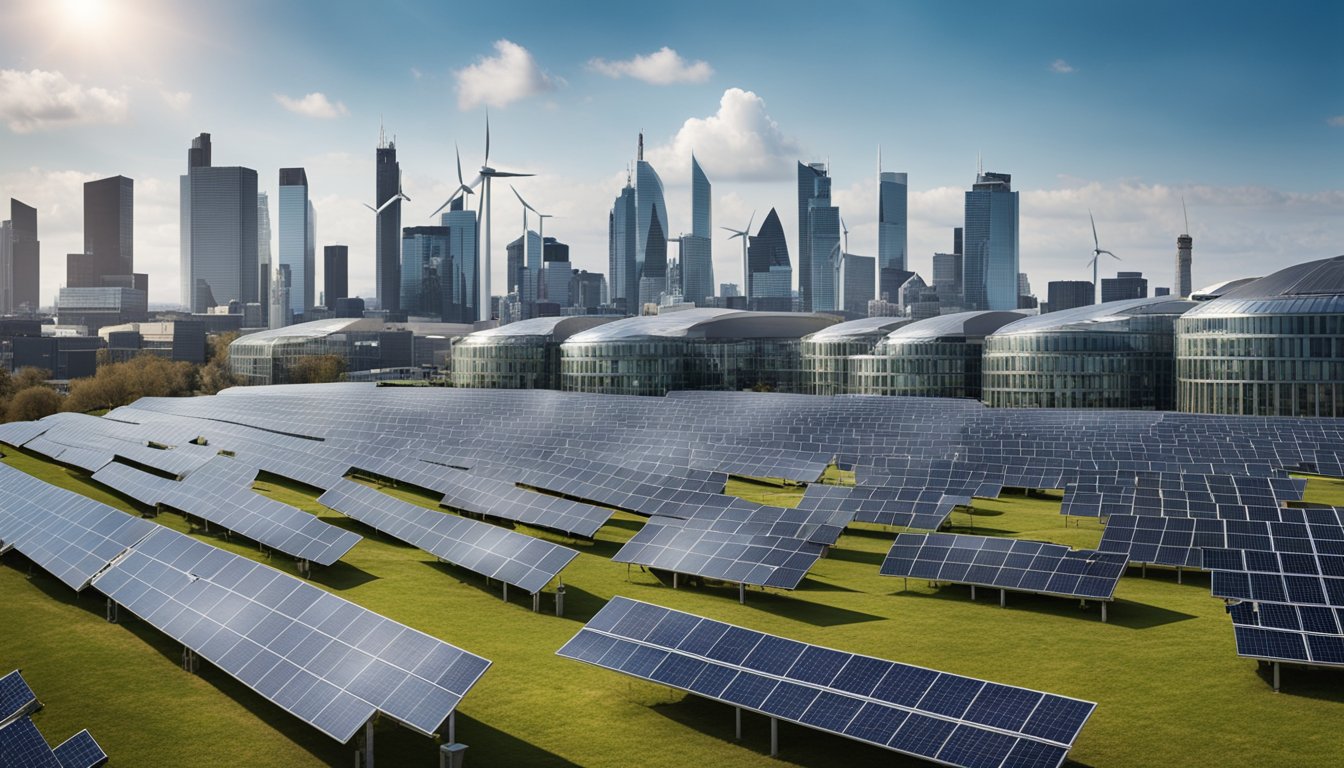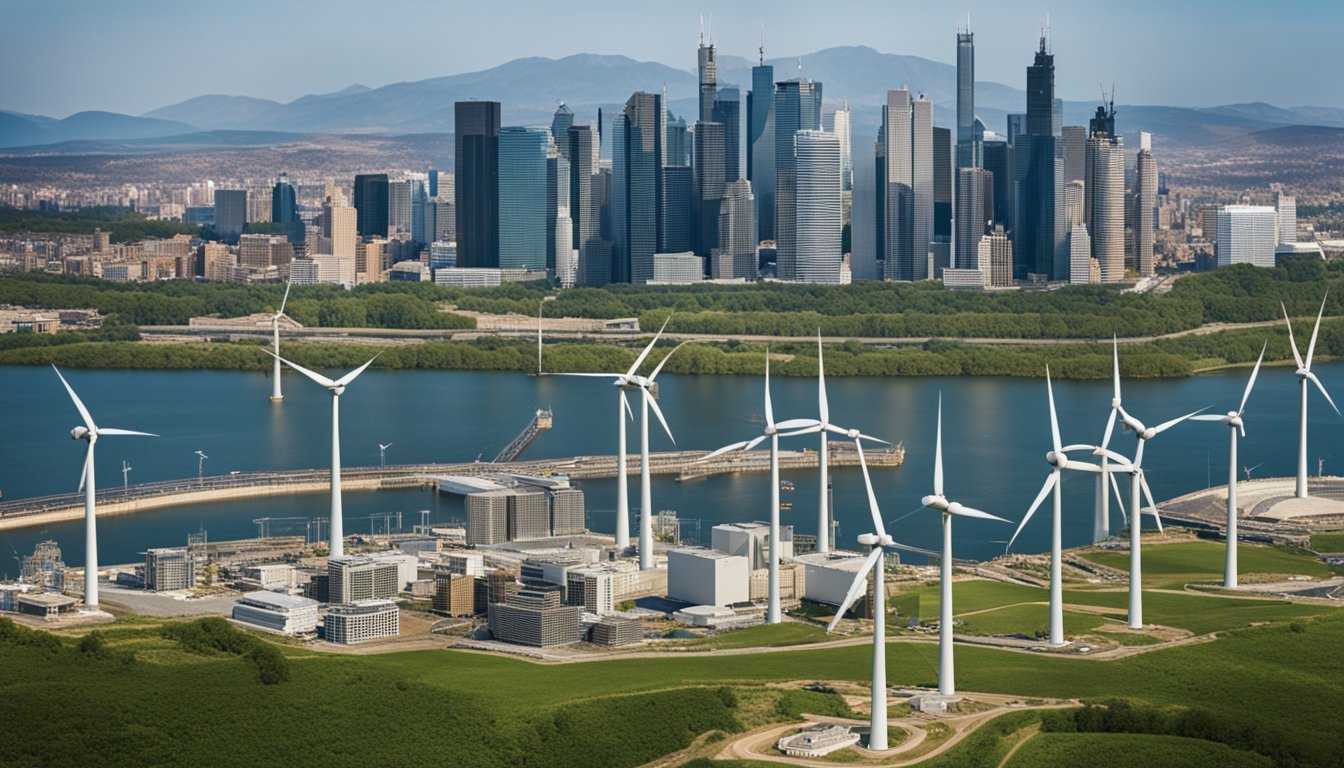Late updated: 26 Sep 2024 15:09
Written by: Oliver Bennett
UK Renewable Energy Trends: Shaping the Future of Sustainable Power
Exploring the landscape of renewable energy in the United Kingdom unveils both remarkable progress and ongoing challenges. Our nation has witnessed a significant shift towards renewable sources, positioning wind as the predominant source of electricity for the first time. This transformation aligns with our broader commitment to achieving net zero and reducing the impact of climate change.

The renewable energy sector is intricately linked to our economic stability and employment rates, offering promising job opportunities as the industry continues to grow. With government backing and policy changes, the potential for further development in renewable energy is increasingly apparent. This growth brings about questions on sustainability and the future trajectory of energy trends in the UK.
As we navigate these changes, understanding the full impact and addressing common queries becomes essential. With ongoing advancements, the role of renewables stands as a pivotal element in our country's energy strategy.
Key Takeaways
- Wind energy leads UK electricity production for the first time.
- Renewable sector growth boosts economy and job prospects.
- Policies support the UK's shift towards a sustainable energy future.
Evolution of Renewable Energy in the UK
The development of renewable energy in the UK has been marked by significant historical growth, with recent strides positioning the country as a key player in renewable capacity and innovation. The sector's future looks promising with ambitious targets aimed at achieving net-zero emissions by 2050.
Historical Capacity and Generation
In the early years, the UK’s renewable energy sector relied heavily on hydropower and bioenergy. Initially, growth was steady, yet modest, compared to fossil fuels. As technology advanced, wind energy, particularly offshore wind farms, became prominent. This shift marked an increase in energy capacity and electricity generation. By focusing on wind and solar power, the UK has actively diversified its energy mix. This strategy helped overcome initial technological and investment challenges, eventually leading to a broader acceptance of renewables.
Recent Trends and Current State
Recently, the UK's renewable energy sector has seen impressive advancements. As of March 2023, renewable sources contributed to 41.7% of electricity generation. Offshore wind and solar technologies are now integral to our energy strategy. This shift has been driven by government policies promoting investment in low carbon and renewable energy economies. There are significant contributions from hydroelectric and bioenergy sectors. Key moments, such as September 2023 and March 2024, highlighted robust growth despite challenges like workforce shortages and supply chain issues.
Projections for the Future
Looking ahead, the UK's commitment to achieving net-zero emissions by 2050 drives innovation in the renewable sector. Future projections indicate further investment, especially in offshore wind and hydrogen technologies. By targeting increased capacity and efficiency, we aim to significantly reduce reliance on non-renewable energy sources. The growth in low emission vehicles is expected to complement this transformation by decreasing the environmental impact of transportation. We anticipate continued advancements in energy storage solutions, which will enhance grid stability and leverage renewable energy’s full potential.
Impact on the UK Economy and Employment

The renewable energy sector plays a pivotal role in boosting the UK's economic dynamics. As the sector continues to grow, both economic growth and employment patterns shift in meaningful ways. This influence is particularly evident in areas like turnover increases and the rise of green jobs.
Economic Growth and Renewable Energy
The renewable energy sector significantly contributes to economic growth by increasing turnover. Notably, UK businesses in the low carbon and renewable energy economy (LCREE) reported an estimated £69.4 billion in turnover for 2022.
This growth is not just about numbers. It reflects profound shifts across the energy industry and the broader economy. Low carbon electricity plays a critical role in modernising the UK's energy infrastructure. Investments in energy-efficient products and services are also reshaping traditional sectors, including the manufacturing and construction industries. By focusing on renewable energy sources like offshore wind, which now accounts for a significant portion of the country's electricity, we are fostering innovation and competitiveness. This shift is crucial for the sustained strength and adaptability of the UK economy.
Employment Patterns in the Green Sector
The green sector is reshaping employment patterns in the UK. With experimental estimates highlighting the growth of green jobs, the LCREE employment landscape is evolving. Employment in the green sector encompasses activities that contribute to environmental protection and climate change mitigation.
The rise of green jobs is creating new opportunities within both traditional and emerging industries. Sectors like low carbon services and the manufacturing industry are particularly affected as they adapt to sustainable practices and technologies. The construction industry also plays an essential role in the creation of green jobs, driving an increase in employment opportunities related to energy-efficient projects. This growth doesn’t just signify a trend; it represents a critical evolution in how we value and cultivate the workforce for a sustainable future.
Frequently Asked Questions

In the UK, renewable energy has become an increasingly important part of our energy mix, with significant growth in certain sectors. The government is actively supporting this transition, which has led to promising developments and progress towards future energy targets.
What proportion of the UK's energy currently comes from renewable sources?
Renewable energy sources accounted for around 42% of the UK's electricity generation in 2022. Wind and solar power have been substantial contributors, along with bioenergy. This marks significant progress in reducing reliance on fossil fuels.
What is the anticipated trajectory for renewable energy generation in the UK?
The UK's renewable energy generation is expected to continue growing. Investment in offshore wind and solar energy projects remains strong, indicating a promising upward trajectory. Advances in technology and continued government support are likely to accelerate this growth.
How close is the UK to achieving its renewable energy targets for 2030?
As of now, the UK is on track to meet its 2030 renewable energy targets. The government has set ambitious goals, including increasing offshore wind capacity to 40 GW. Current data suggests we are making steady progress towards these benchmarks.
Which renewable energy sectors are seeing the most significant growth in the UK?
Offshore wind and solar energy sectors are witnessing the most significant growth. The UK boasts one of the largest offshore wind farms in the world, and solar capacity is expanding rapidly. These sectors are pivotal in the nation's renewable energy strategy.
What recent developments have occurred in the UK's renewable energy industry?
Recent years have seen several notable developments, such as the expansion of offshore wind farms and advancements in energy storage technology. Investment in these areas has driven innovation, with new projects enhancing the nation's renewable capacity.
How is the UK government supporting the transition towards renewable energy?
The UK government supports renewable energy through policies, subsidies, and funding initiatives. Programmes like the Contracts for Difference (CfD) scheme have been instrumental in stimulating investment in clean energy projects, as well as enhancing overall capacity.
